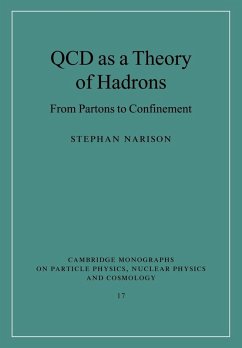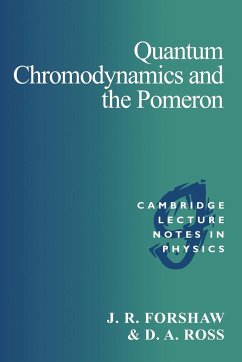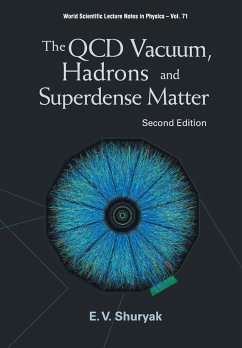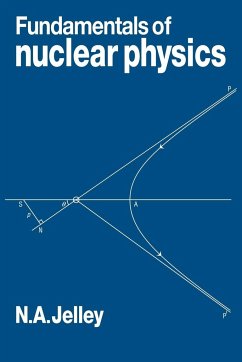
Pomeron Physics and QCD
Versandkostenfrei!
Versandfertig in 1-2 Wochen
77,99 €
inkl. MwSt.
Weitere Ausgaben:

PAYBACK Punkte
39 °P sammeln!
Describes the underlying ideas and modern developments of Regge theory, covering phenomenology, theory and experiment.This book describes the underlying ideas and modern developments of Regge theory, confronting the theory with quantum chromodynamics and a huge variety of experimental data. It covers forty years of research and provides a unique insight into the theory and its phenomenological development. The authors review experiments that suggest the existence of a soft pomeron, and give a detailed discussion of attempts at describing this through nonperturbative quantum chromodynamics. The...
Describes the underlying ideas and modern developments of Regge theory, covering phenomenology, theory and experiment.
This book describes the underlying ideas and modern developments of Regge theory, confronting the theory with quantum chromodynamics and a huge variety of experimental data. It covers forty years of research and provides a unique insight into the theory and its phenomenological development. The authors review experiments that suggest the existence of a soft pomeron, and give a detailed discussion of attempts at describing this through nonperturbative quantum chromodynamics. They suggest that a second, hard pomeron is responsible for the dramatic rise in energy observed in deep inelastic lepton scattering. The two-pomeron hypothesis is applied to a variety of interactions and is compared and contrasted with perturbative quantum chromodynamics, as well as with the dipole approach. This book will provide a valuable reference for experimental particle physicists all over the world. It is also suitable for graduate courses in particle physics, high-energy scattering, QCD and the standard model.
Table of content:
1. Properties of the S-matrix; 2. Regge poles; 3. Introduction to soft hadronic processes; 4. Duality; 5. Photon-induced processes; 6. QCD: perturbative and nonperturbative; 7. Hard processes; 8. Soft diffraction and vacuum structure; 9. The dipole approach; 10. Questions for the future; Appendix A: Sommerfeld-Watson transform; Appendix B: The Group SU(3); Appendix C: Feynman rules of QCD; Appendix D: Pion-nucleon amplitudes; Appendix E: The density matrix of vector mesons.
This book describes the underlying ideas and modern developments of Regge theory, confronting the theory with quantum chromodynamics and a huge variety of experimental data. It covers forty years of research and provides a unique insight into the theory and its phenomenological development. The authors review experiments that suggest the existence of a soft pomeron, and give a detailed discussion of attempts at describing this through nonperturbative quantum chromodynamics. They suggest that a second, hard pomeron is responsible for the dramatic rise in energy observed in deep inelastic lepton scattering. The two-pomeron hypothesis is applied to a variety of interactions and is compared and contrasted with perturbative quantum chromodynamics, as well as with the dipole approach. This book will provide a valuable reference for experimental particle physicists all over the world. It is also suitable for graduate courses in particle physics, high-energy scattering, QCD and the standard model.
Table of content:
1. Properties of the S-matrix; 2. Regge poles; 3. Introduction to soft hadronic processes; 4. Duality; 5. Photon-induced processes; 6. QCD: perturbative and nonperturbative; 7. Hard processes; 8. Soft diffraction and vacuum structure; 9. The dipole approach; 10. Questions for the future; Appendix A: Sommerfeld-Watson transform; Appendix B: The Group SU(3); Appendix C: Feynman rules of QCD; Appendix D: Pion-nucleon amplitudes; Appendix E: The density matrix of vector mesons.














